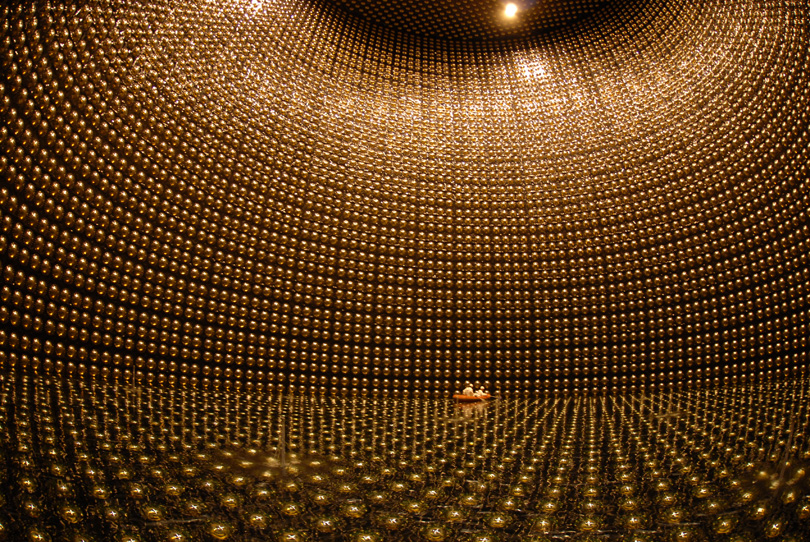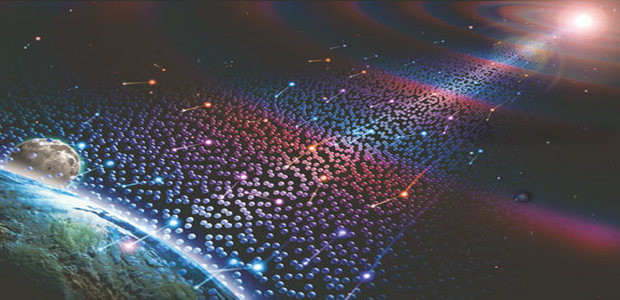In our previous posts, we have seen how neutrinos have the potential of changing the world of communication. Neutrinos are seen as a superior form compared to the other dark matter candidates for the mere reason that we know they exist. Experiments have proved that neutrinos do not carry any electric charge and thus are unaffected by electromagnetic forces. Neutrinos are so light that they have the potential of travelling at nearly the same speed of light. They surely carry some weight in understanding the many secrets of the cosmos which are yet to be revealed.
For a quarter of a century, Wolfgang Pauli’s prediction remained an educated guess. In 1930, the Austrian physicist predicted the existence of a ghostly new subatomic particle. After observing beta decay in a radioactive nucleus, Pauli noted that an undiscovered particle must exist to explain the resulting spectrum.
During beta decay, a proton becomes a neutron by emitting a positron. But Pauli argued the nucleus also emitted an unknown electrically neutral particle. He thought this hypothetical particle had less than 1 percent of a proton’s mass. During the 1930s, Italian physicist Enrico Fermi investigated the problem and completed the work Pauli began.
Fusion reactions in the Sun’s core create a torrent of neutrinos, a fraction of which passes through Earth 8 minutes later.
Fermi thought the weak nuclear force destabilized atomic nuclei and caused particle transformations. He called Pauli’s ghostly particle the neutrino, Italian for “little neutral one.” German physicist Hans Bethe, mean- while, was attacking the question of how stars shine. While investigating this question, Bethe realized that neutrinos played a key role.
Fusion reactions in the Sun’s core create a torrent of neutrinos, a fraction of which passes through Earth 8 minutes later. These evanescent particles carry with them a record of what happens inside a star. Neutrinos come in three types — electron, muon, and tau. But these elusive particles don’t interact much with other matter. Neutrinos can pass almost unfettered through us, Earth, the Sun, or the super-dense heart of an exploding star.
Like strands of high-tech kelp, the Antares detector array rises from the seafloor off Marseille, France. Precisely timing a neutrino’s light flash is the key for tracking a particle’s path through the array.

While they exist in tremendous numbers, the challenge of neutrinos is detecting them. In the 1950s, physicists Fred Reines and Clyde Cowan began a series of experiments to try. By the mid-1950s, their Project Poltergeist showed that it could be done. Their experiment picked up neutrinos by using a nuclear reactor as a source and a water tank as a detector, both sunk deep in a mine.
astronomers have known the universe contains much more matter than the bright stuff we can see.
Although Bethe outlined the processes by which stars obtain energy through hydrogen fusion, many neutrino mysteries remain. For a long time, astronomers have known the universe contains much more matter than the bright stuff we can see. They know this because they track galaxies moving in response to the gravitational pull of large amounts of material that neither emits nor blocks light — dark matter.
Another unique way of tracking these neutrinos is carried out by the Super-Kamiokande neutrino detector in Japan which holds 50,000 tons of ultrapure water surrounded by light tubes.

Could untold varieties of neutrinos account for much — or even all — of the dark matter astronomers believe is out there?
According to physicist John Learned of the University of Hawaii, the answer is yes. “We now know that neutrinos constitute about as much mass as all the stars one sees in the night sky,” Learned says. “It could be a lot more. Cosmologists need to take neutrinos into account.”
these hard-to-catch particles may also help astronomers decipher how matter itself came to be.
Independent of neutrinos’ possible role as dark matter, the hard-to-catch particles may also help astronomers decipher how matter itself came to be. When the Big Bang occurred, matter and antimatter should have been created in equal amounts. And when matter and antimatter meet, they annihilate each other. If the amounts had been equal, then only radiation would have filled the universe.
Why is there so much matter in the cosmos? Maybe neutrinos played a key role in the universe’s early asymmetry. If so, we owe our existence to them. Neutrinos surface in other cosmic mysteries. Expect to hear a lot more about these strange particles as scientists continue to probe matter’s secrets.
-end-


































